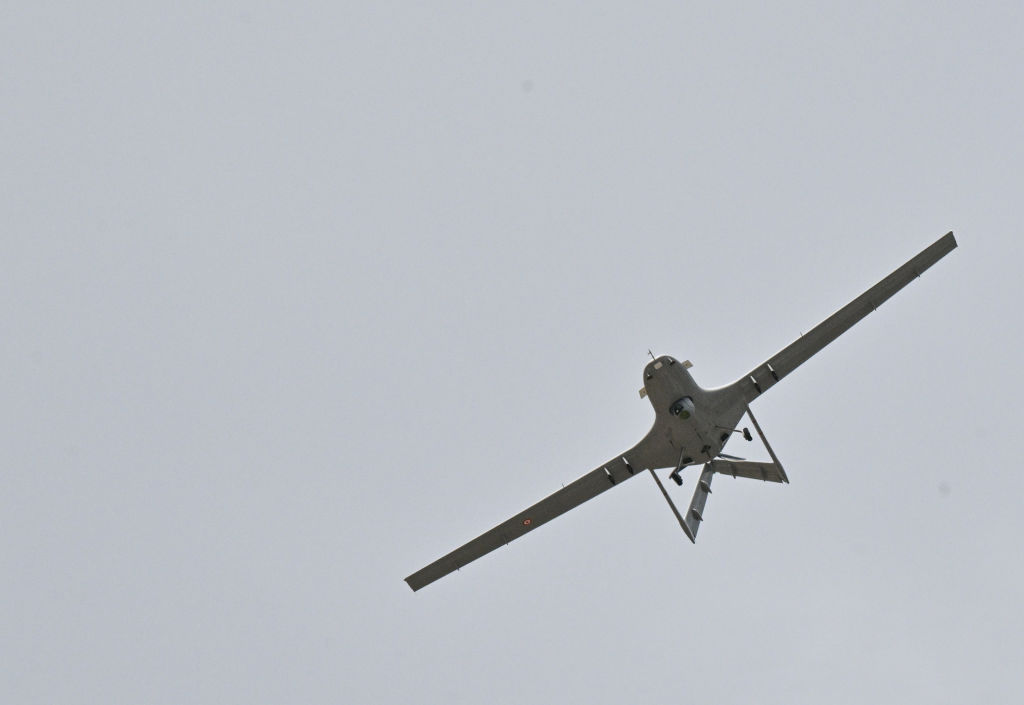In the ongoing war between Ukraine and Russia, there has emerged something of an unlikely hero. Known as the TB-2, it is a medium-range reconnaissance and strike drone manufactured by the company Baykar Tech in Türkiye. Costing on average between $US1–2 million, these drones are more than ten times cheaper than their US-manufactured counterparts.
The utility of these combat systems in the Ukraine has led to other nations expressing an interest in adding to their drone stockpiles. In fact, Baykar Tech announced last year that there is a three-year waiting list for these systems to be deployed.
Not to be outdone, Russia quickly pivoted to acquiring drones of its own, in particular the Shahed “kamikaze” systems manufactured by Iran. Not content with buying the drones from the Iranian government, Russia now plans on mass-producing the drones at a secret factory 500 miles west of Moscow.
These stories have all the makings of a John Le Carré novel. According to one report, Russian military commanders covertly flew to Tehran with $US145 million in cash, as well as stolen British and US anti-tank and anti-aircraft missiles to secure an initial offering of Shahed drones from the Iranian government.
Against this backdrop, there are also concerning claims emerging about the involvement of Western companies in the supply and manufacture of these weapons. In August, the Ukrainian government submitted a report to the G7 group in which it said it had identified components in the Shahed drones as originating in Western countries – including the United States, Switzerland, the Netherlands, Germany, Canada, Japan, and Poland. Then a few weeks ago, a similar report found that Western companies were producing the components of Türkiye’s TB-2 drone as well.
The supply of these components isn’t necessarily illegal. Even despite the significant arms embargoes and sanctions imposed on Russia by most of the Western states, there has been no evidence to suggest that any Western company has violated any such sanctions.

“Dual use” technology may instead be involved – technology with both a civilian and military application – and not for the first time. In 2021, reports emerged that China was using chips manufactured in Taiwan and programmed with US software to test hypersonic missile technology. The United States reacted predictably, using its strict export controls laws to block the supply to China not just of the chips themselves, but also the software and manufacturing equipment to make them.
But this had unintended consequences: not only did the actions by the United States fuel a massive underground market for chips (especially from the world-renowned graphics company Nvidia), but China retaliated by blocking its export of gallium and germanium, two rare metals used in chip manufacture.
So the question remains: why haven’t Western countries taken a stronger stance against the supply of components that end up in foreign military tech?
The answer lies in the convoluted and complicated realm of dual-use technology. Artificial intelligence is one, drones another. Both the Internet and the Global Positioning System (GPS) started out life as secret projects of the US military.
To protect innovation and military superiority, most countries use export control laws – but they aren’t very good at applying to dual-use technology. The US International Trade and Arms Regulation (ITAR) is infamous for being too strict, preventing cooperation and innovation even between and among US allies. But the ITAR has also long been criticised for being used as a tool of foreign policy, rather than protecting US military technological superiority.
Another part of the issue is that modern weapons – such as the TB-2 – rely on increasingly complex and complicated sub-systems, each of which can be a highly sophisticated technology on its own and making regulation challenging. Recklessly banning exports can stifle innovation, discourage tech investment, and cripple industry partners. In a country such as Australia, which is heavily reliant on import and export to underpin its economy, exports controls can also mean serious financial disruption.
A third problem is the cost of end-use monitoring and enforcement; that is, making sure that the technology that is exported is only being used by the country and for the purpose intended. For example, Canada banned the export of optical sensors to Türkiye in 2021 after TB-2 drones were used in the Nagorno-Karabakh conflict. But this is the weaponry equivalent of shutting the door after the horse has bolted.
What needs to be done about dual-use technology is a topical question, given Australia has just announced a review of its own export control laws. A previous review from 2018 has already found that Australia’s regime doesn’t properly consider or account for the risk posed by unregulated export of dual-use technologies.
Firstly, existing export controls need to be properly enforced. This could take the form of information and intelligence sharing to detect circumvention, and support for monitoring teams operating from embassies in high-risk countries.
Secondly, there needs to be a closer relationship between industry, military and defence forces, and policymakers to better identify technologies with a dual-use application. If Canberra ever gets around to establishing a National Technology Security Office, this seems like the natural home for a coordinating role.
The third requires coordinating export control measures across numerous countries. Imposition of restrictions on military exports by only one country simply don’t work – if alternatives can be sourced from third-party countries, then the restrictions are worthless. And if country A has a lower threshold for export control than countries B and C, country A will naturally be the target of less scrupulous countries looking to get their hands on such technology.
Without a more comprehensive and integrated approach to the regulation of dual-use technology, we may miss (or even encourage) the most unscrupulous use of it. No matter how innocuous the latest technological development might be, the weaponisation of that technology cannot be allowed to come as a surprise.

